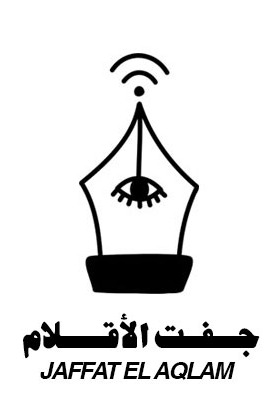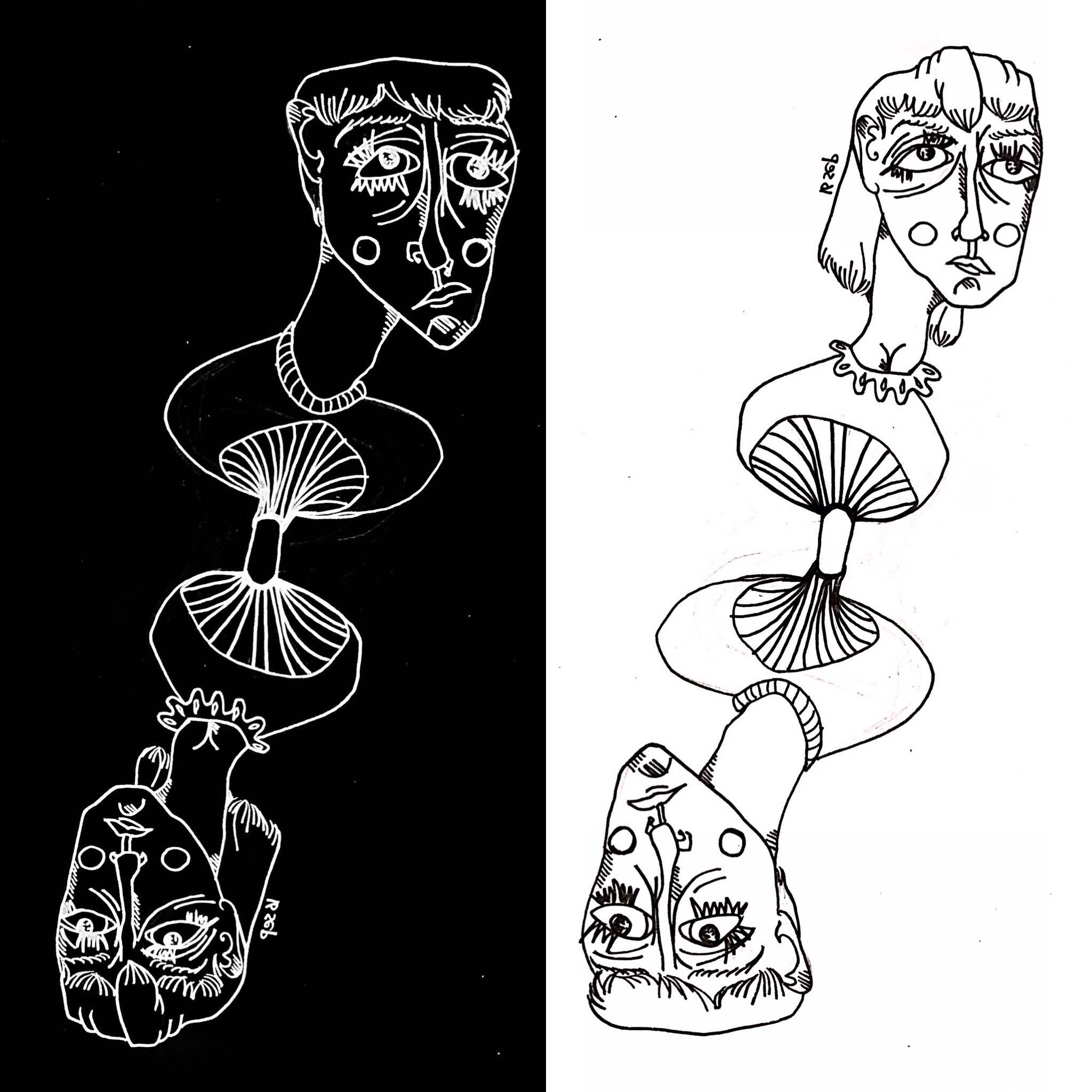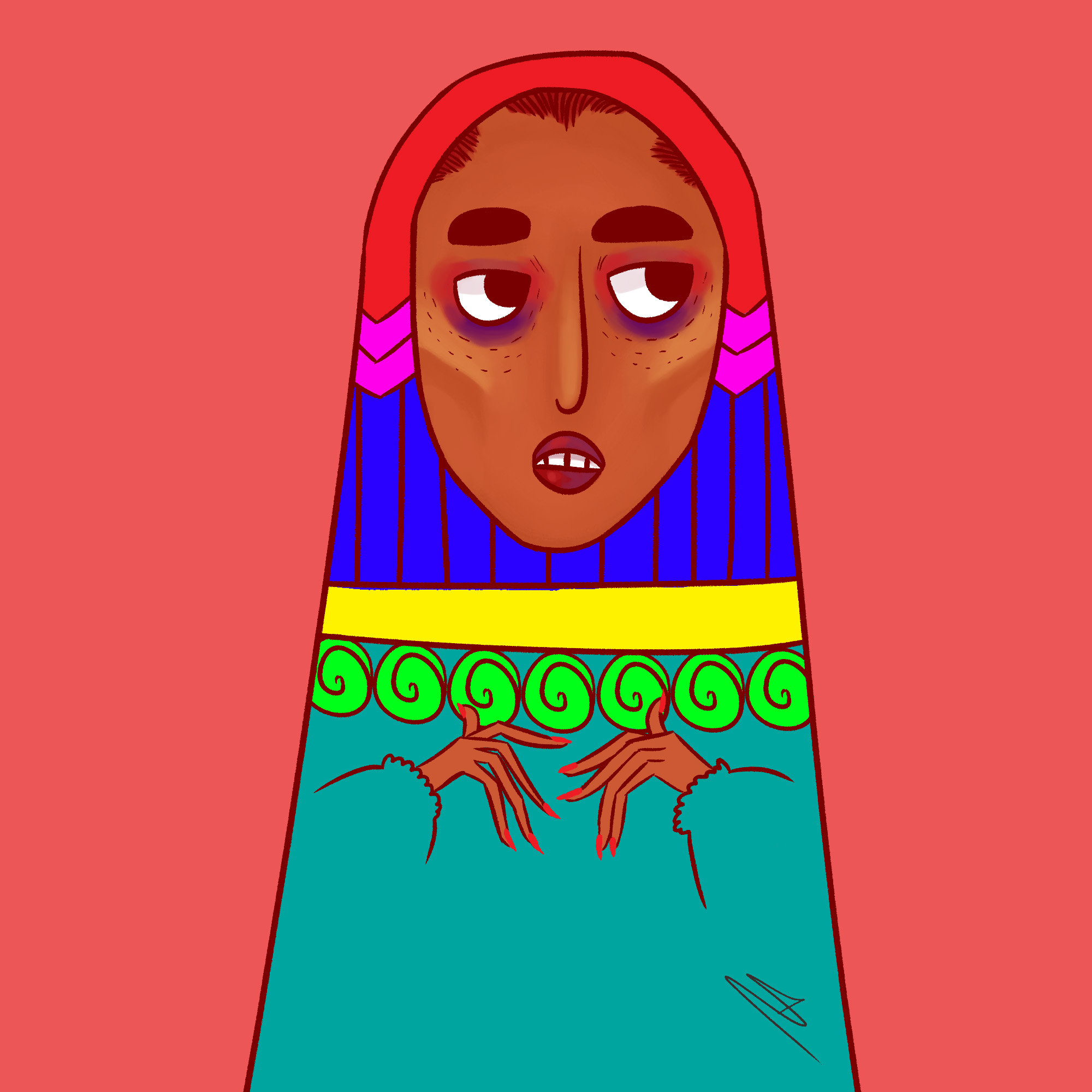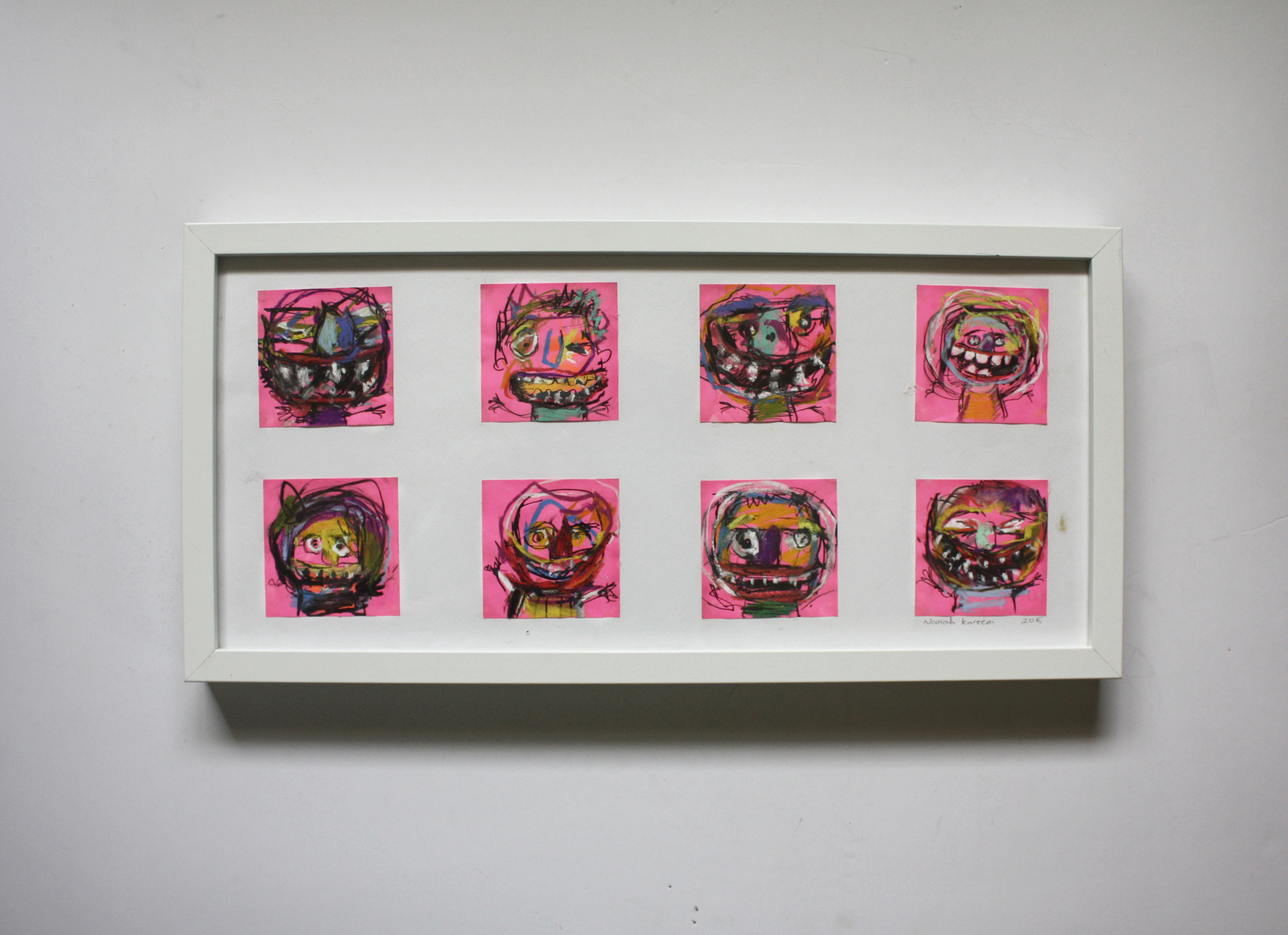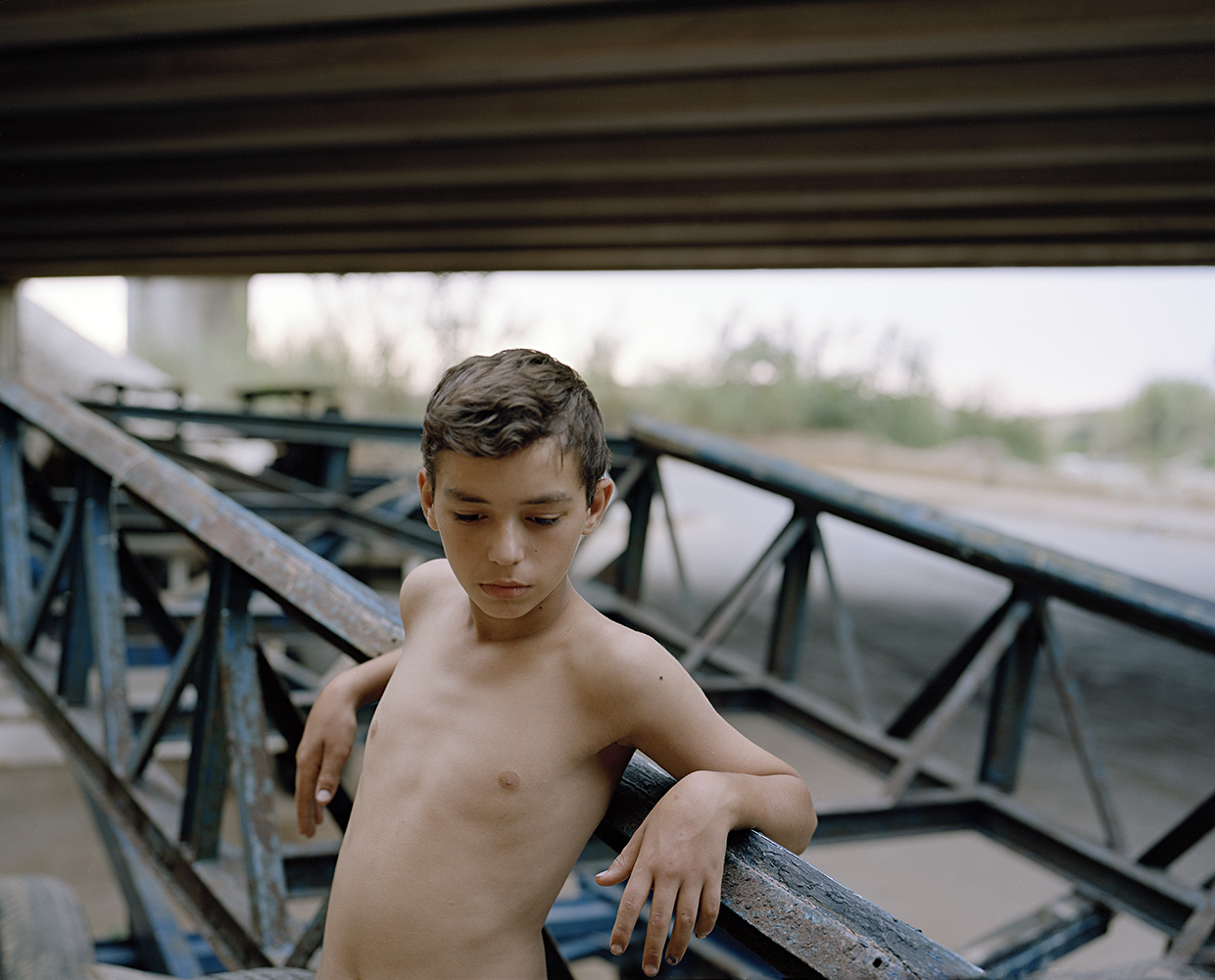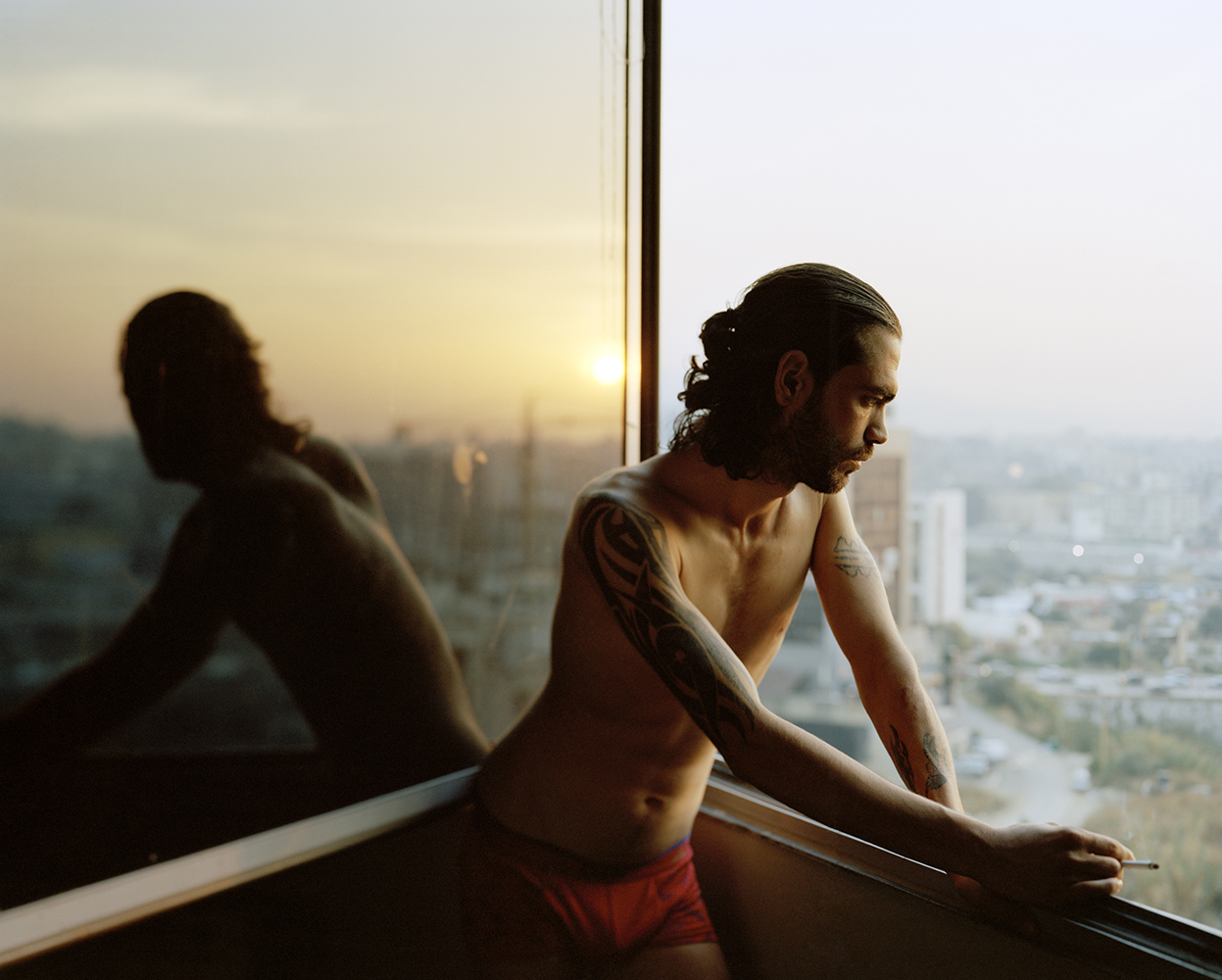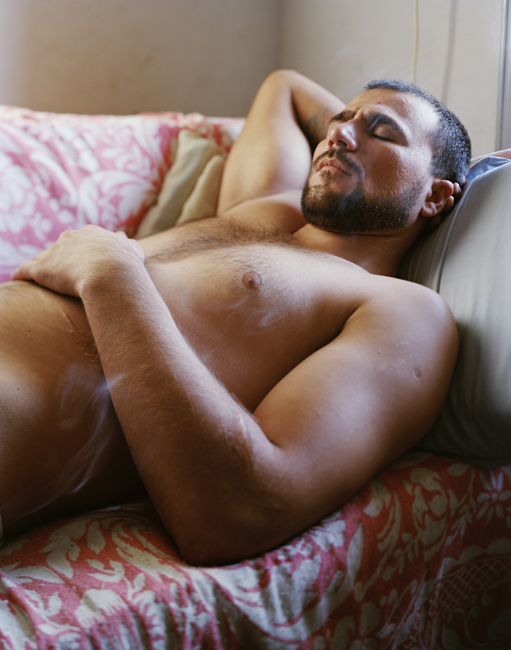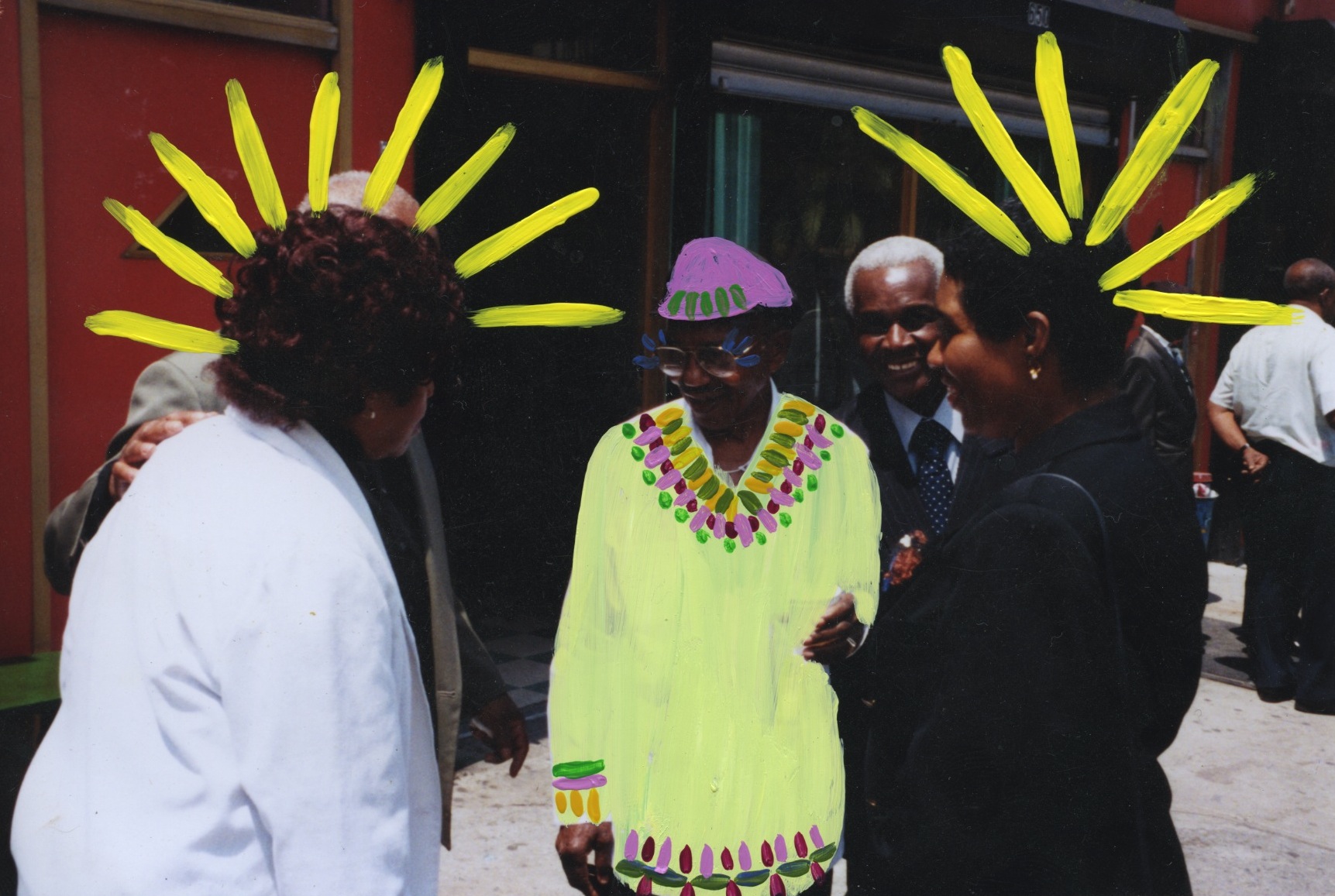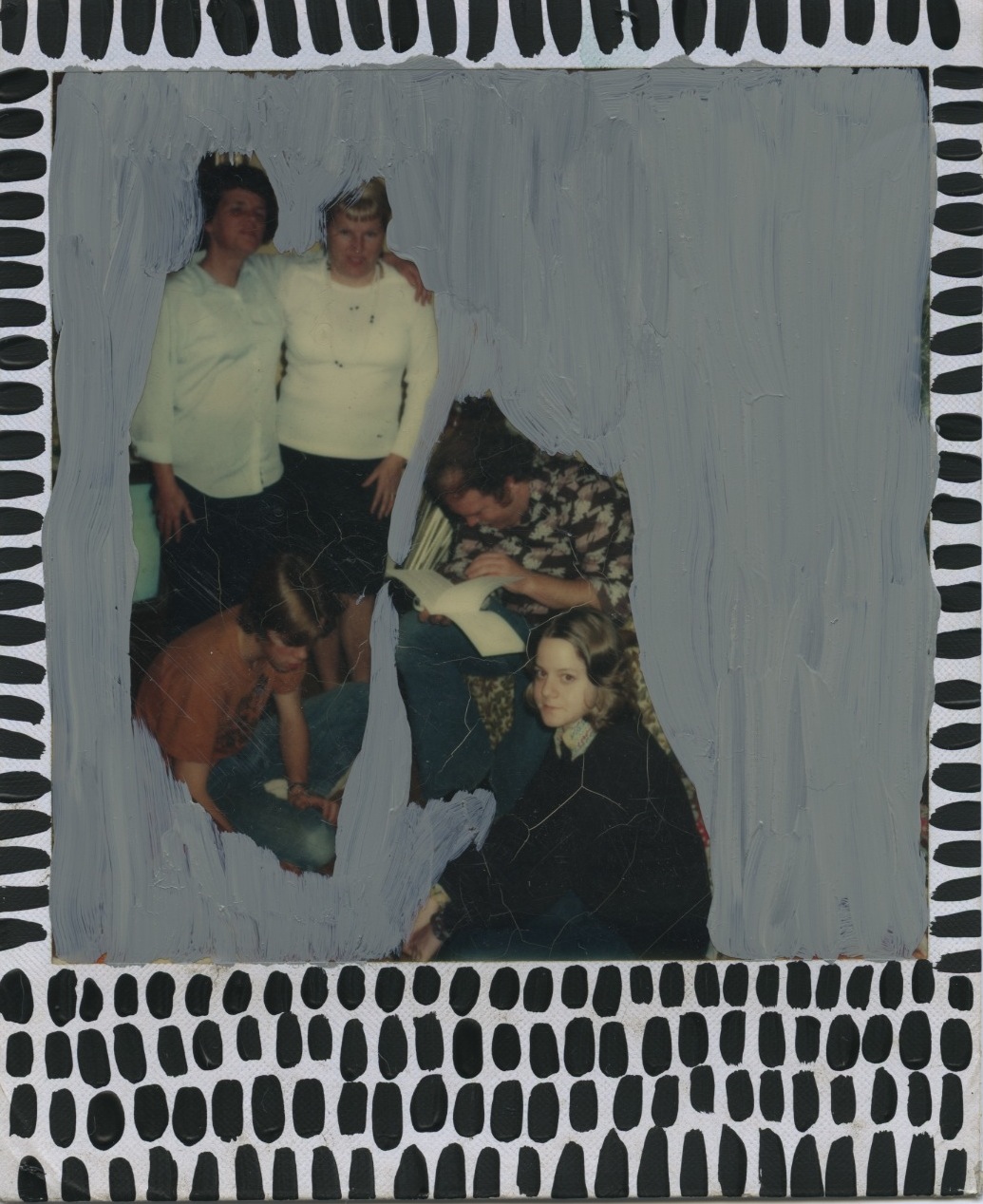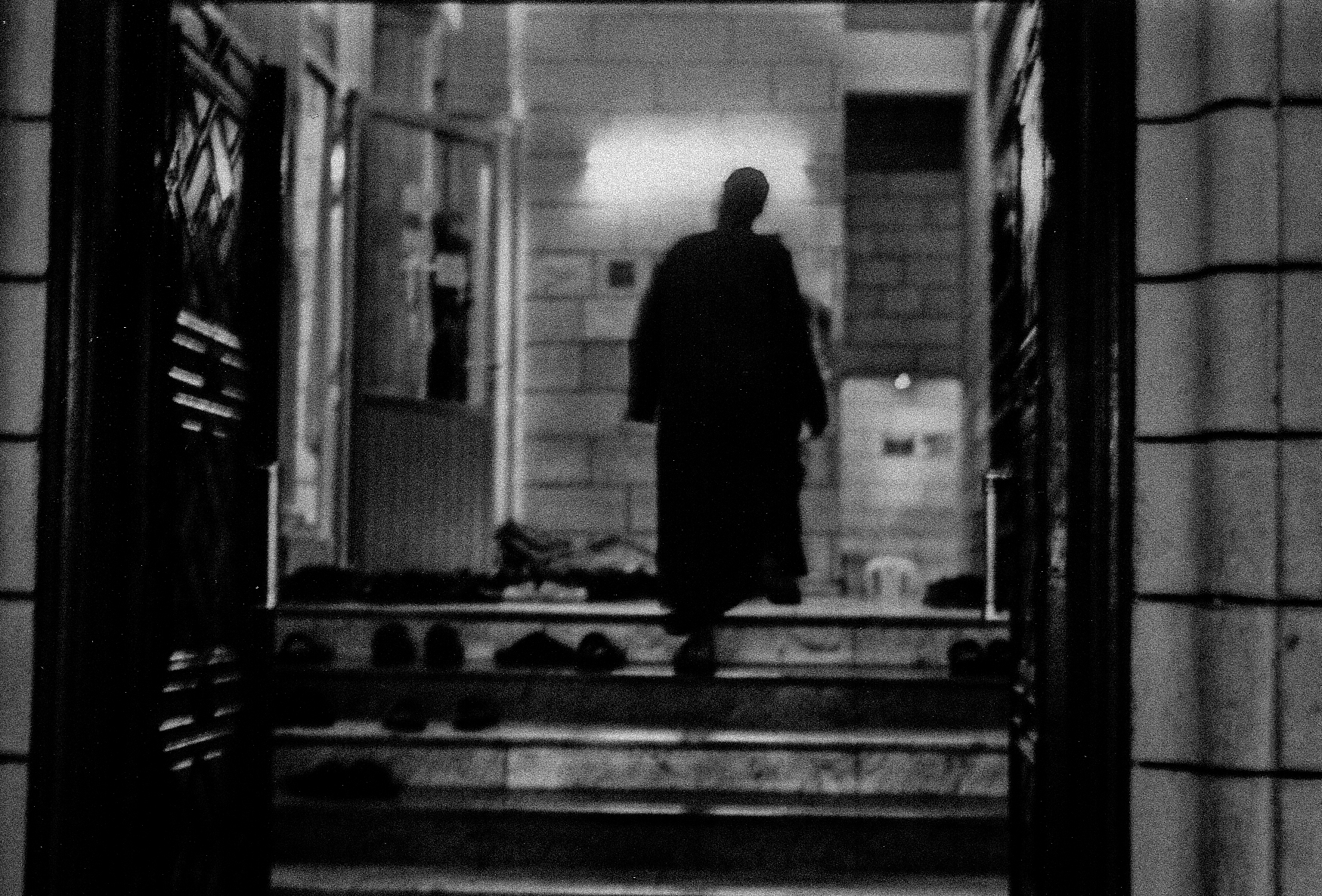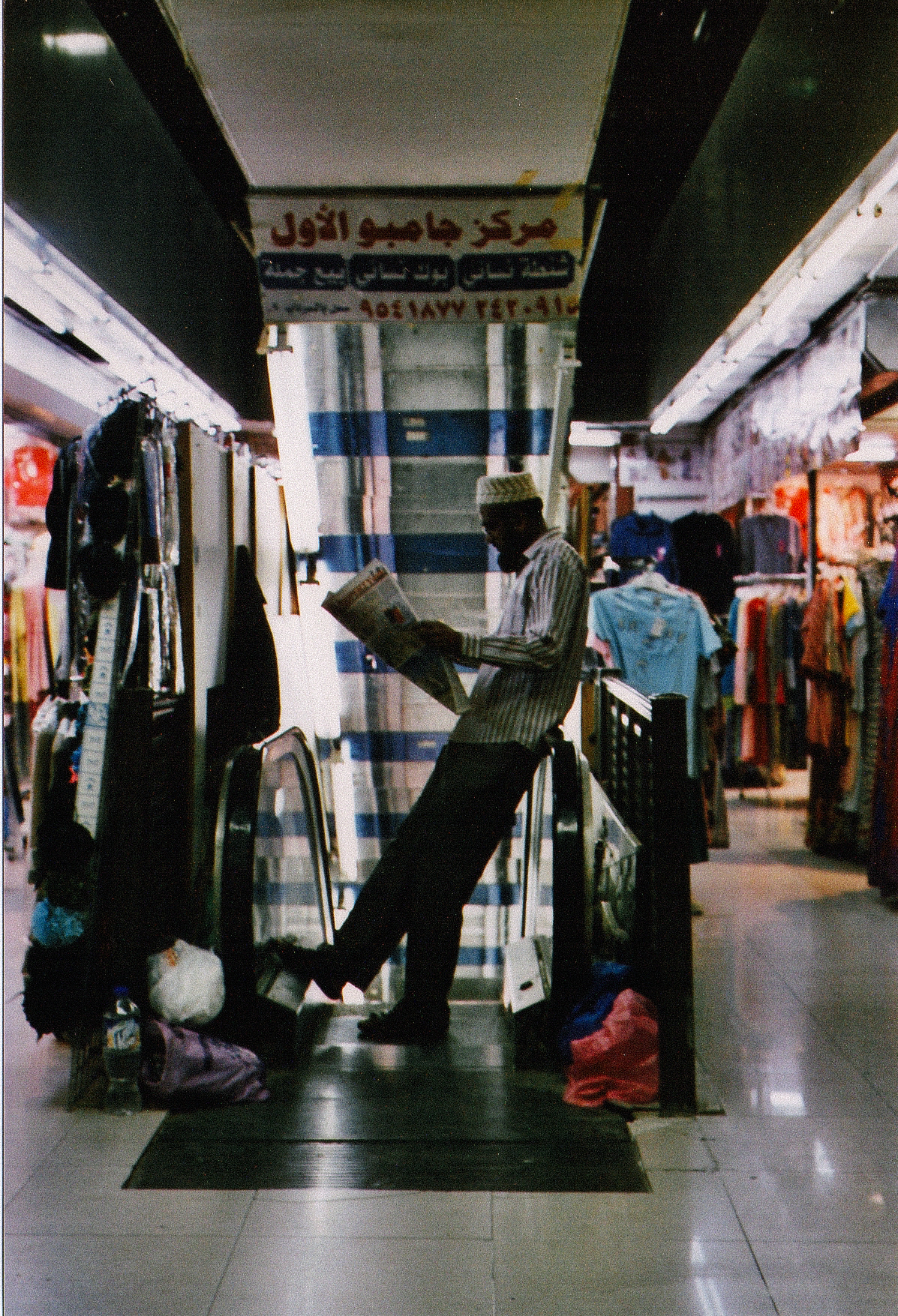On the mountain, God will save you. Put the pieces back together. - lyrics by foxygen

UNTITLED // NOURA ALZUABI & AALA SHARFI
(after aja monet)
I know the ocean is blue because of the way it reflects light
I know that 60% of the human body is made of water
which can only mean that we all carry oceans inside of us.
I know that the anatomy of a person doesn't define them
I know that softness doesn't equate weakness
and being feminine doesn't mean you're any less.
I know bee colonies have a unique odour recognisable
only to members of that hive.
I know that's what home is like
I know I haven't been there in 3 year
and it could be a couple more before I even consider going.
I know the grass isn't always greener on the other side
but that has never stopped me jumping fences trying to get there.
I know my tongue has been colonised by a language that
didn't bother seeing my native one as anything less than barbaric.
I know I have done little to stop it since.
I know how easy it is to hold on to anger
How I spent 20 years believing I hated my father
only to realise that sometimes forgiveness is the
hardest thing to give away.
I know my heart is the same size as my fist
but I am still trying to figure out if that is a metaphor
for flight or fight.
***
text // noura alzuabi
art // aala sharfi
روابط
------
ART: REEM GHAMDI
UNDERMINED AS ALWAYS // KHAWLA ALMARZOOQI
UNPOLISHED // NOORAH KAREEM
A few months ago I came across the meaning of the aya “Say everyone should work according to the form that they were created in”
It stuck with me. In these paintings I tried studying different types of characters. Sometimes I’d begin with my eyes closed. I’d be making random marks and forms on a sticky note, then I’d open my eyes and use whatever lines and shapes I had, to create a person. Imitating how we were all born with characteristics (forms) and we are to work and live according to them.
FLY ME TO THE MOON // JUMANA AL-RAMZI
TAWSEET AL SHARQ #1: GEORGE AWDE
George Awde’s photographs of male Arab bodies examine the crossover of traditional notions of masculinity and family with the private spaces they occupy that act as an outlet of modern male love, bonding and self-identity.
The semi nude bodies defeat the audience’s motives of seeking a definitive Arab male masculinity and probe them to seek the intimacy portrayed in each of the Arab men photographed. The bare skin of the subjects each filled in its own way with tones, scars, tattoos, and freckles place each man in a different paradigm and displaces any attempts of classifying their sexuality or masculinity. It instead invites the audience into the personal spheres of intimacy of each subject to show the unrestricted definition of Arab masculinity and male interaction.
***
george awde // portfolio
nadim choufi // twitter & tumblr
ABANDONED MEMORIES #1 // REEMA MOTIB
In a Brooklyn garage sale there was a pile of photographs. A huge pile, could have easily amounted to 2000 photographs. I picked up a few and while I was paying for them I asked the guy who works there where they get them from. He told me that they buy them off people who don't think the photos are worth keeping, he find them in abandoned storage units and in estate sales.
He later went on about how they're actually very valuable because they're single copies and rarely, but sometimes, may hold some unknown historical significance. I paid two dollars for seven photographs.
So, I took a few home and as I was painting on them, I realized that these were really symbolic moments in people's lives. Graduations, parties, weddings and I know nothing about these people but it made me sort of sad to realize that someone (or they themselves) decided that these moments were meaningless or at least not meaningful enough to keep.
It may be a very ambitious idea, but it's the process of attempting to restore significance to a dead or abandoned memory.
Editor's note: If you'd like to participate in Reema's project, please contact us jaffatelaqlam@gmail.com for details. Reema is looking for old photographs. Abandoned or personal photographs are very much welcomed.
LINGUA FRANCA #1: ELLIPSES
Writing in his book Camera Lucida, Roland Barthes describes a photograph as the reflection of the photographer an inherent imposing of the photographer’s own dreams, fears, and obsessions into celluloid film (or pixels). Photographing such a seemingly bleak landscape such as Kuwait’s can be difficult, given the country’s oversaturation of skyscrapers and its inherent societal resistance towards being photographed. Being a conservative society, it is also especially difficult to photograph women without asking their permission first. Yet, the beauty of Kuwait lies within its little idiosyncrasies, its overlooked details often overshadowed by its modern razzmatazz; the banal. The exploration of everyday banality, the quotidian, is a fascinating theme to explore through photography. Stories are hidden deep within aged leather shoes and ratted handbags. The reflection of pain through the mundanity of everyday life is a theme that enthrals a person the more they try to delve in it; as Barthes writes, an obsession imposed on a photograph. The theme is further amplified through the motif of loneliness. I, perhaps unconsciously, try to impose scenes of loneliness through the framing of the subjects within the photograph and the usage of black and white film. The monochromatic nature of BW film enhances the feeling of solitude, the contrast of shadows and highlights encapsulates the dichotomy of coming to terms with pain and solitude while trying to live a normal life.
Kuwait is a nation of migrants. Every person living in Kuwait can trace back their roots elsewhere (even though some won’t admit it). Cosmopolitanism has been the driving force behind Kuwaiti culture since its inception in the 18th century. This multi-ethnic melting pot (as cliché as this term can be) is reflected in its music, cuisine and art: ranging from Africa, Iraq, Iran and elsewhere in the Gulf region. That said, Kuwait’s mistreatment of migrant and foreign workers is no secret. It joins ranks with other oil-rich Gulf states in its systematic mistreatment of migrants, demonstrating appalling human rights abuses through withholding of salaries from employers and institutional racism from the government.
For the most part, migrant workers built Kuwait’s infrastructure, a reflection of the aforementioned cosmopolitanism. Workers from Southeast and Far East Asia and elsewhere from the Middle East constitute about 68% of the population. The irony lies within the majority of the non-Kuwaiti population and the nature of mistreatment they receive. Migrant workers serve as the foundation of Kuwaiti society; a society that, alongside Kuwaiti citizens, would not have come to existence without their help. Their sweat, tears and blood helped build Kuwait to what it is today. Yet we, as a Kuwaiti society, often overlook them. We see them as nothing more than a set of hands doing a job, devoid of humanity. We owe migrant workers everything for helping us build our country.
For this photoset, I went to the souq (Market) of Mubarkiya, the oldest known souq in Kuwait, predating the rapid urbanisation that swept the country during the 50’s after the discovery of oil. Within the old brick and concrete roads of the souq lie the smells of old Kuwait: fishmongers, butchers, fruit sellers and fabric shops, right in the heart of Kuwait’s booming downtown financial district. This juxtaposition of history is also reflected through market goers; selfie sticks and Segway scooters alongside old dates sellers and incense merchants; fathers taking their children to the old coffee shops to drink tea and tell the stories their fathers told them; families eating kebabs and shawermas in the same restaurant they’ve been going to for the past 30 years. The character of the souq is reflected upon the various nationalities of merchants there: Indian Bohra gold sellers, Iraqi and Iranian fruit and food sellers, Egyptian butchers, and Syrian fabric sellers. Mubarkiya is a microcosm of Kuwait’s cosmopolitan history.
My fascination with photographing the banal led me to conversations and photos with the various nationalities that inhibit the souq. A Syrian fabric shop owner, the one who is posing with a cigarette in his mouth, came to Kuwait at a young age and started working with other Syrians in the business. He still has family back in Syria and, as he looked away (perhaps out of respect) and inhaled his cigarette, told me about his attempts at applying for a visa for his nephew in order to get him out of Aleppo. His pain was tangible, it almost had a taste of stale cigarettes chain-smoked to help him cope. A pain reflected by his blackened out face; a face succumbing to hopelessness, numbness. The unfortunate banality of his pain contrasted by his sense of humour when he told me he chooses to dress smart because no one would buy from a messy looking merchant. He wore a bright patterned maroon tie with a beige suit, his hair parted sideways showing off his baldness. That is the perpetual state of Arab manic depression: tremendous pain coupled with bouts of humour and happiness.
In another photo an Indian tent maker told me about his mistreatment by his employers. He would sleep in a small caravan in the yard and share an outdoor shower with some other 20 odd workers. He is still making his tents and he is still hoping of a better life. His co-workers saw my camera and called me over to take his photo, they were joking about how uptight he was. He gave a small, shy smile and agreed to get his picture taken. When I raised my camera, his face changed. The shy smiled became a stoic look. His face was in defiance to how he is being treated; a testament of his will, resilience. He didn’t blink, nor change his face after I took his photo four times. He had the uncanny will to live, to thrive.
These stories are not unique; they are present in every single migrant working in Kuwait. Stories of pain coupled by an unthinkable willingness to live and survive, and most of all thrive. These stories are deeply rooted within the banality of migrant life in Kuwait. A quotidian nature of accepting pain and living through it.
عن الخريف // ASMAA MOHANNADI
آخر الأوراق المحمّصة تتبختر
كالوردة الأجمل على الإطلاق
ـــــــــــــــــــــــــــــــــــــــــــــ
الخريف: محطّة انتظار
قبل اللقاء
وبعد اللهفة الثانية
إن افترضنا الشتاء لهفة أولى
ـــــــــــــــــــــــــــــــــــــــــــــ
الخريف صوتٌ معتدل
يواسي
ويلتمس للأخضر الأعذار
ـــــــــــــــــــــــــــــــــــــــــــــ
الخريف: ذاكرة الأصوات
وموتٌ لا يهمّك
